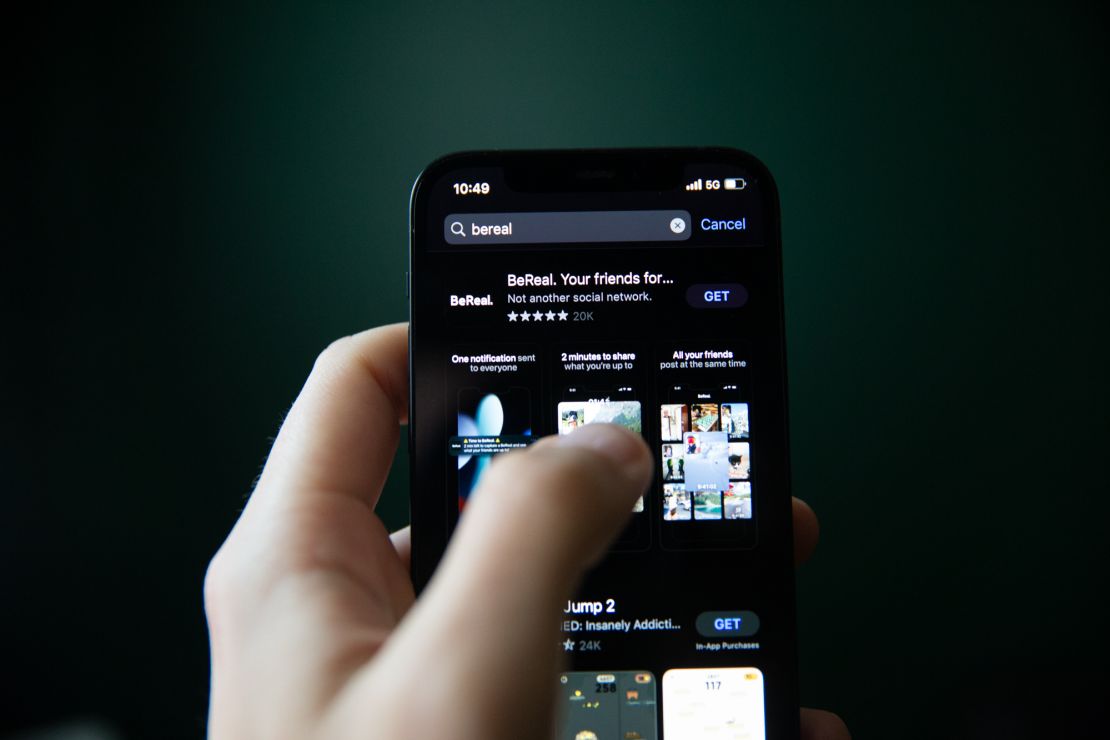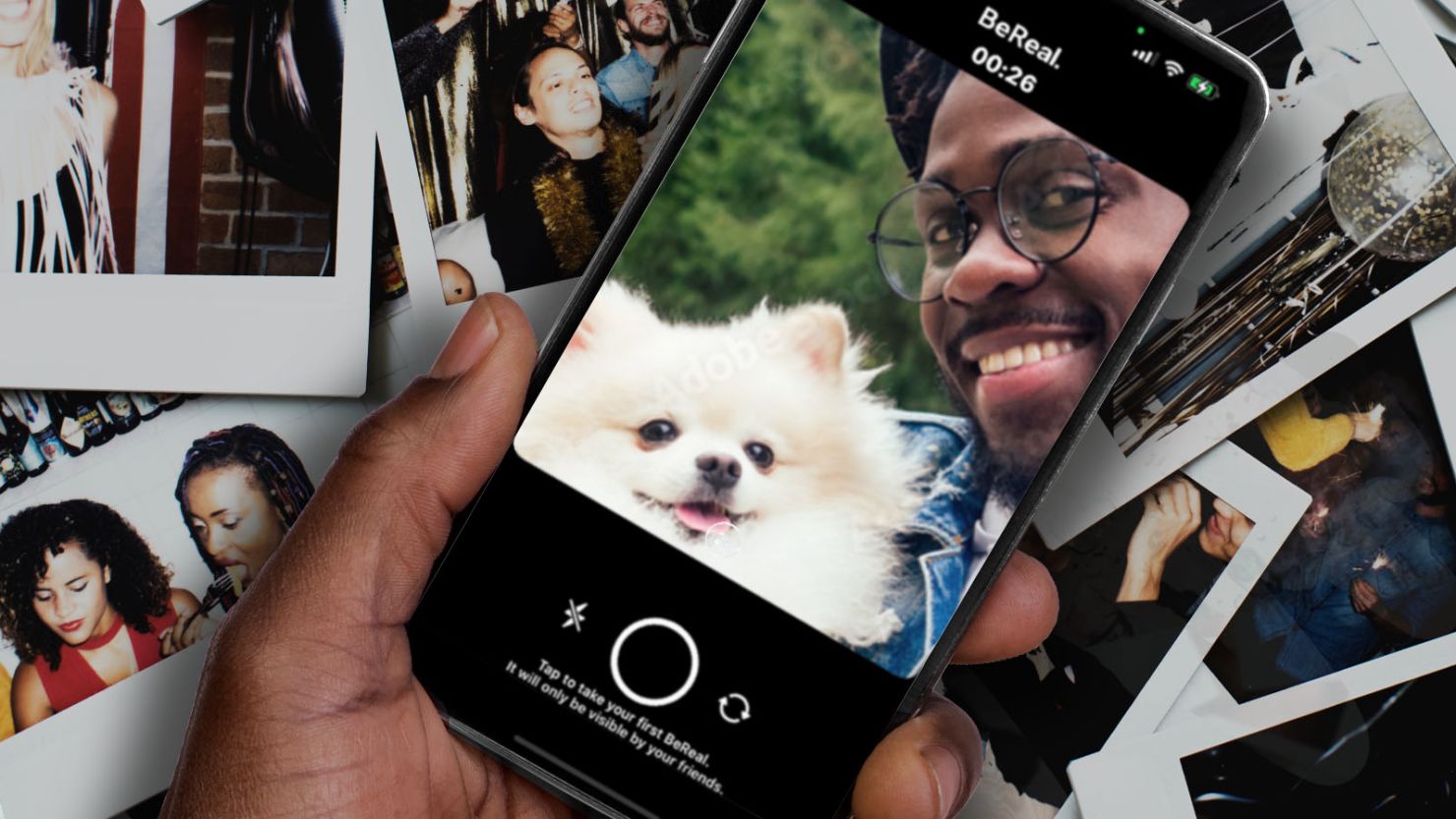In a bygone era, there was a common refrain muttered amongst the most social media cynical among us: Nobody cares what you had for lunch.
Nobody cares – that was the argument against most social media. And yet, as we’ve moved from online blogs to Facebook to Instagram to TikTok, the opposite has proven true. People do care. They care a lot.
Few things underscore that point more than the rise of a new social media app, BeReal. Billed as a way to see what your friends are really up to, BeReal prides itself on, well, being real.
Users are invited once a day at random to post a photo of whatever they’re doing, whether it’s chilling at home in sweatpants or doing a grocery run. The filters and edit buttons of Instagram and VSCO are nowhere to be found. The app gives you two minutes to post – after that, you’re late, and your friends will know.
So if you wait four hours to snap a pic of something interesting, like the concert you’re going to or the bar you’re at? Shame on you.
At least, that’s the idea. And it’s been successful, with about 40 million installs of BeReal this year alone, according to data from Apptopia, which tracks and analyzes mobile app performance. Just this month, the app was the subject of a “Saturday Night Live” sketch with actor Miles Teller during the show’s season opener.
Both Instagram and TikTok have caught on to BeReal’s popularity, recently attempting to introduce aspects of the app into their own user experiences.
Yet BeReal’s intense insistence on authenticity, or at least perceived authenticity, sets it apart. It has existed before, of course – confessional essays on blogs were staples in the early days of the internet and, more recently, every young person had a “finsta,” or fake Instagram, to post messier versions of themselves deemed unsuitable for their polished main pages.
BeReal is meant to be different. In the past, online spaces may have encouraged authenticity, but to what end? One finger flick through Instagram and users may see a slurry of smiling faces supposedly having the time of their lives. Facebook boasts the latest vacations, weddings and job changes. Even seemingly candid photos have become staged: eyes pointed at just the right angle, hair perfectly tousled.

We present shiny versions of ourselves but also want to be accepted for who we really are
As humans, we seek belonging and intimacy, said Anna Lomanowska, director of University of Toronto’s Digital Well-being Lab. And we enact that by letting people into our spheres – which is exactly the door BeReal opens.
“There’s a sense of both belonging in that community, that everyone has dull lives, most of our day-to-day is pretty dull, and validating that experience,” she said.
That same transition happens in art history, Lomanowska said. In the early eras of Western art, artists would portray people at their finest, decked in their best clothes and jewelry. Later on, people began painting more day-to-day things, and it was revolutionary – elevating the mundane into art.
Photography and social media have gone similarly. In the past, many would treat social media like a photo album, saving their best photos. And, of course, before the convenience of smartphones, the average person couldn’t take as many photos anyway.
“Initially, there’s this idea of presenting something more special,” Lomanowska said.
But this has changed. With such a vast landscape of social media – from your grandmother on Facebook to your closest friends on BeReal – you don’t have to post just the best photo of you smiling. You can also post the gym selfie, the derpy selfie and a photo of your food all at once. With more options, she said, comes more authenticity – more opportunity to show who you really are.
Real life is different. “Authenticity” becomes inescapable; one mishap at lunch and everyone can see the mustard stain. Online, though, it’s easier to manage how people perceive us, Lomanowska said. It’s easier to present a facade, to blur the lines of what’s real. And yet, there’s always that desire to be loved and accepted for who we actually are.
Social media lets us play with expressions of identity
And so authenticity, too, can be curated. Photo dumps, crying selfies – authenticity also has its trends. Sharing every second of your life isn’t possible, Lomanowska said, so that sharing also becomes a performance. Even in our attempts to be real, we are caught in a loop. We end up on the opposite side.
Every generation has a quest for identity, Lomanowska said. Who are we really? Who do we want to be? How do we want to be known? Social media has become a way for us to grapple with those questions. With a screen between us and the real world, we can play with our expressions of identity, see what fits.
And if we contradict ourselves, then so be it. We can post both the perfect made-from-scratch meal on Instagram and the selfie eating fast food in bed on BeReal – in one day. Both are still us.
“We’re not tied to those few photos that we put up online. We can have so many,” Lomanowska said. “We’re complex beings. We’re never going to be identified by just one thing.”
Maybe the app, at its best, normalizes the idea that some days are just days, she said. Everything doesn’t have to be perfect. Few things are.
CNN’s Faith Karimi contributed to this report.



